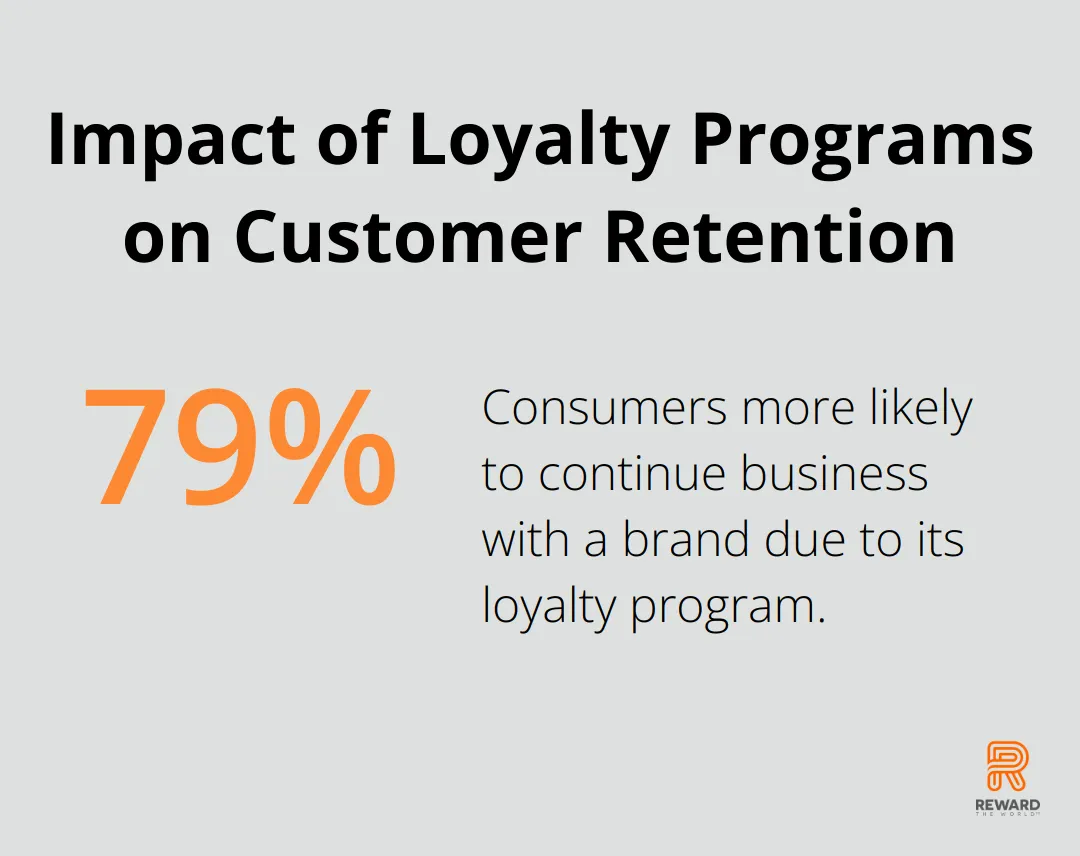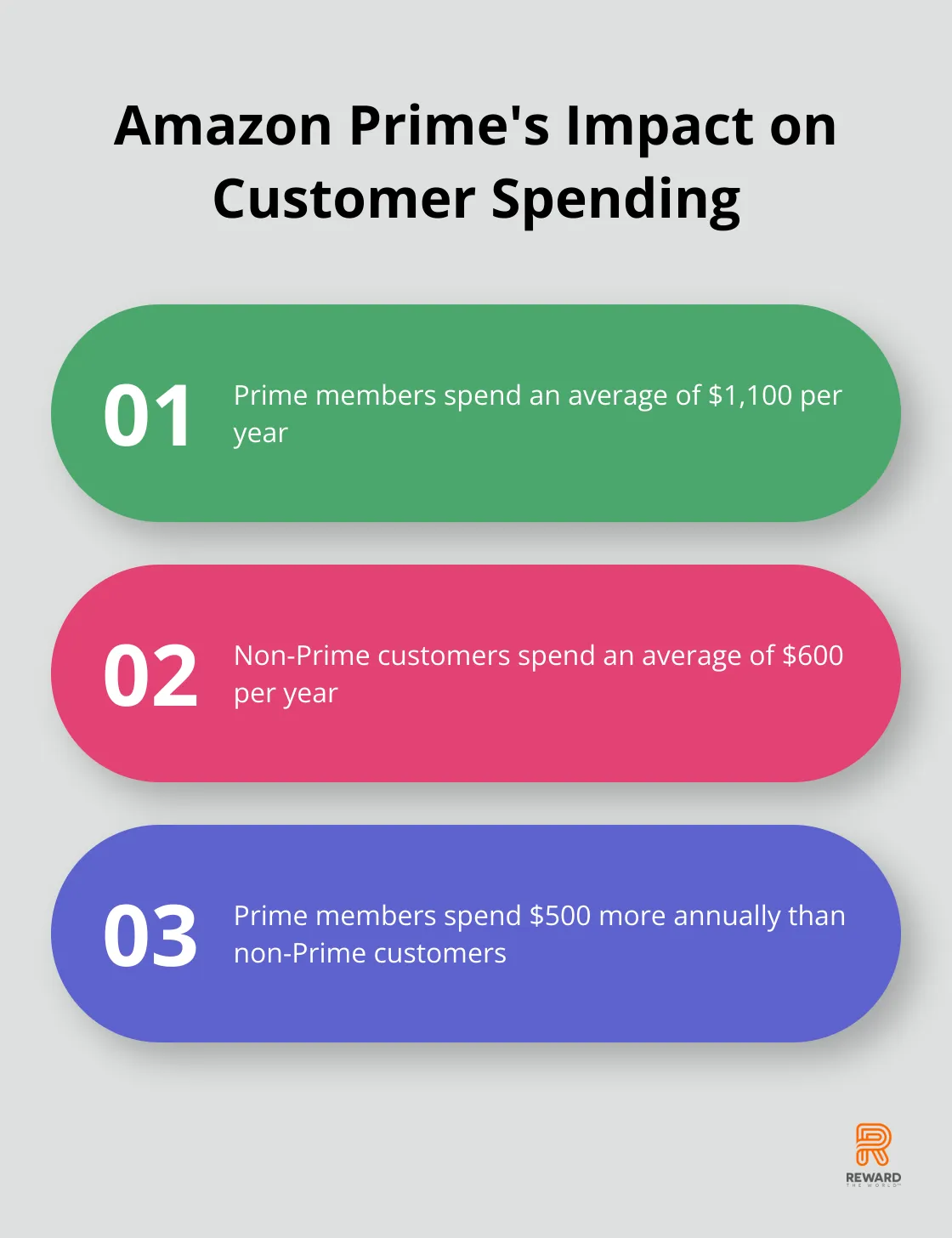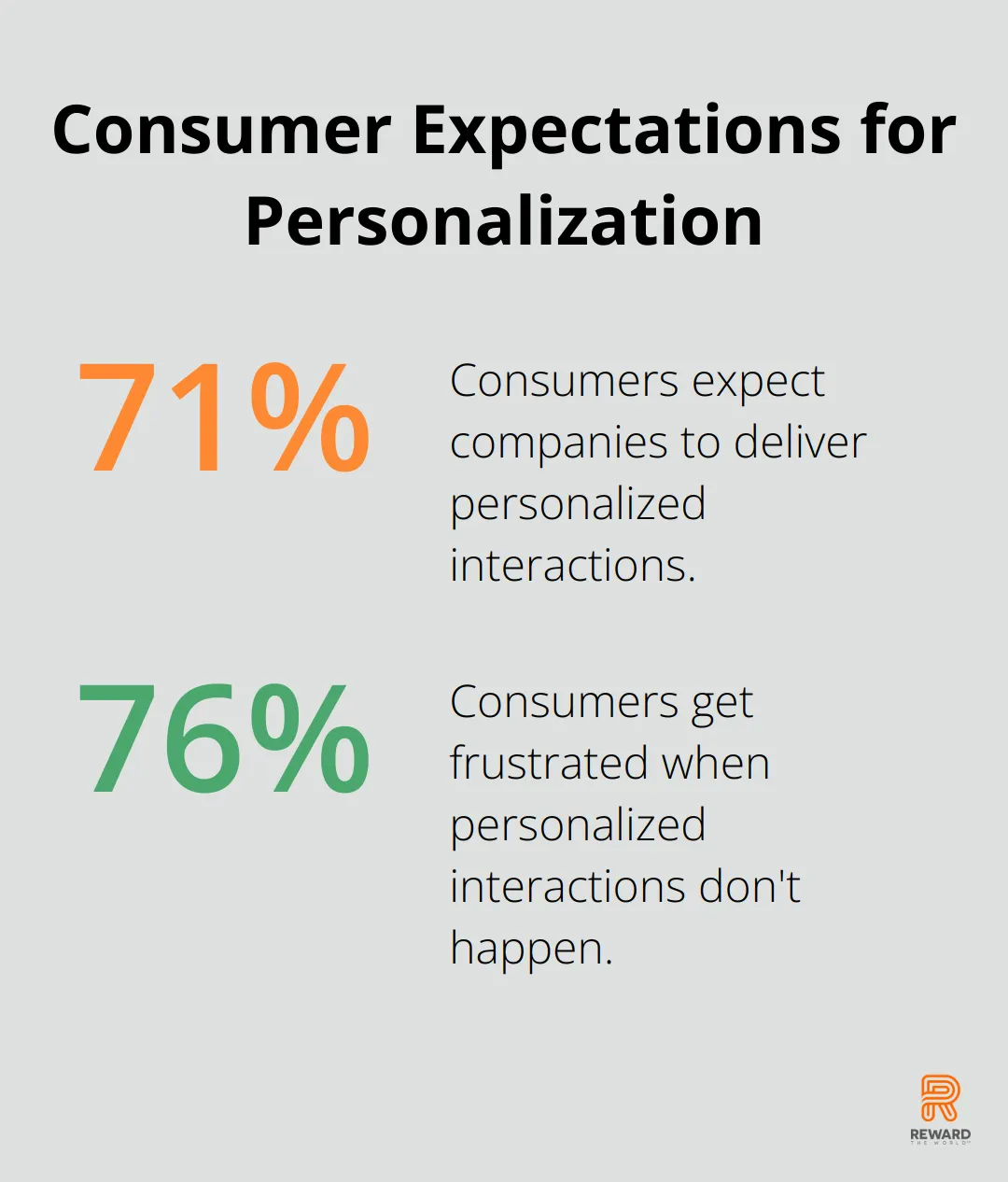
Recurring rewards are revolutionizing customer loyalty programs. These innovative systems offer regular incentives, creating a powerful psychological impact that keeps customers coming back.
At Reward the World, we’ve seen subscription loyalty strategies transform businesses across industries. From major retailers to subscription-based services, companies are reaping the benefits of increased customer retention and lifetime value.
Why Recurring Rewards Work
The Essence of Recurring Rewards
Recurring rewards form the backbone of modern loyalty programs. These ongoing incentives (not just one-off perks) keep customers engaged over time. At their core, recurring rewards provide regular, predictable benefits that customers receive for their continued loyalty.
The Psychology Behind Recurring Rewards
The power of recurring rewards stems from their ability to tap into fundamental human psychology. A study by the Incentive Research Foundation found that frequent, smaller rewards often motivate behavior more effectively than larger, infrequent ones. This occurs because they create a constant sense of achievement and reinforcement.
Habit Formation and Expectation Setting
Recurring rewards succeed by creating positive habits. When customers know they’ll receive a benefit at regular intervals, it becomes part of their routine. For example, a coffee shop that offers a free drink every 10th visit will likely see customers return frequently, as they anticipate and work towards that reward.
Customer Retention Impact
The effectiveness of recurring rewards manifests in concrete numbers. Almost 8 in 10 (79% of) consumers are more likely to continue to do business with a brand because of its loyalty program. This directly translates into increased customer retention and, ultimately, higher profits.

Customization and Flexibility
Effective recurring reward systems offer customization options to match customer preferences and behaviors. Businesses can tailor their programs (using tools like those offered by Reward the World) to create personalized experiences that resonate with their target audience. This level of customization enhances the program’s appeal and effectiveness. However, it’s worth noting that consumers are 5% to 10% more inclined to consider switching to another loyalty program within the same industry or product category compared to two years ago.
The success of recurring rewards extends beyond retail. Let’s explore how various industries have implemented these programs to drive customer loyalty and boost their bottom line.
Real-World Success Stories of Recurring Rewards
Starbucks Rewards: A Coffee Giant’s Triumph
Starbucks’ rewards program exemplifies recurring rewards at their best. Members accumulate stars with each purchase, which they can exchange for free drinks and food. The program’s impact speaks volumes: Starbucks reported Q3 Consolidated Net Revenues Up 12% to a Record $9.2 Billion, with Q3 Comparable Store Sales Up 10% Globally, 7% in North America, and 24% Internationally. This success story illustrates how a well-crafted recurring reward system can propel significant revenue growth.
Amazon Prime: Subscription-Based Loyalty at Its Finest
Amazon Prime offers a suite of recurring benefits, including free shipping, streaming services, and exclusive deals. This model proves incredibly effective for customer retention. Consumer Intelligence Research Partners estimates that in the US, customers with a Prime membership spend on average $1,100 per year, compared to $600 per year for customers without a Prime membership. These figures demonstrate how recurring rewards can dramatically increase customer lifetime value.

Sephora’s Beauty Insider: Tiered Rewards for Sustained Engagement
Sephora’s Beauty Insider program employs a tiered system of recurring rewards to encourage ongoing engagement. Members earn points on purchases, redeemable for products or experiences. The program’s effectiveness is undeniable: Beauty Insider members account for 80% of Sephora’s annual sales (as reported by Forbes). This success highlights how recurring rewards transform casual shoppers into loyal, high-value customers.
Subscription Box Services: Built-In Recurring Rewards
Subscription box services like Birchbox and Dollar Shave Club have integrated recurring rewards directly into their business models. Customers receive a curated selection of products regularly, often with the opportunity to earn points or receive discounts on full-sized items. This approach results in impressive customer retention rates. McKinsey reports that 15% of online shoppers have subscribed to one or more subscription services, indicating the growing appeal of this model.
Impact on Customer Lifetime Value
Recurring rewards significantly influence customer lifetime value (CLV). A study by Bain & Company found that a mere 5% increase in customer retention rates can boost profits by 25% to 95%. These statistics underscore the potential of well-executed recurring reward programs to substantially enhance a company’s bottom line.
While these success stories showcase the power of recurring rewards, businesses must consider how to implement such programs effectively. The next section will explore strategies for creating impactful recurring reward systems that drive customer loyalty and boost revenue.
How to Build Effective Recurring Reward Systems
Personalization: Engaging Customers Individually
Personalization stands at the forefront of successful recurring reward programs. McKinsey research revealed that 71 percent of consumers expected companies to deliver personalized interactions, and 76 percent got frustrated when it didn’t happen. Businesses should segment their customer base and tailor rewards to individual preferences and behaviors to achieve this level of personalization.

A clothing retailer might offer style-specific rewards to fashion-forward customers, while providing family-oriented bundles to those with children. This customization increases the perceived value of rewards and strengthens the emotional connection between the brand and the customer.
Seamless Integration with Existing Programs
Businesses with established loyalty programs can amplify their effectiveness by integrating recurring rewards. The goal is to create a cohesive experience that doesn’t confuse or overwhelm customers.
Sephora’s Beauty Insider program exemplifies this seamless integration, incorporating recurring rewards into its tiered system. Members earn points on every purchase, which they can redeem for products or experiences. This integration has resulted in the program scaling customer engagement and driving unparalleled success in the beauty industry.
When implementing recurring rewards, companies should ensure they complement existing loyalty structures. This might involve offering bonus points for recurring purchases or exclusive access to new products for loyal customers.
Data-Driven Optimization
Data analytics play an essential role in optimizing recurring reward systems. By analyzing customer behavior, purchase patterns, and reward redemption rates, businesses can refine their offerings for maximum impact.
A McKinsey study found that 3 out of 4 members of top-performing loyalty programs changed their behavior to generate more value for businesses. This finding underscores the importance of continual analysis and adjustment.
Companies should establish clear KPIs for their recurring reward program, such as customer retention rate, average order value, and frequency of purchases. These metrics should guide decision-making and help refine reward offerings over time.
For instance, if data shows that customers make more repeat purchases when offered free shipping, companies should adjust their recurring rewards to emphasize this benefit. Similarly, if certain product categories see higher engagement, businesses should consider tailoring rewards to promote these items.
Flexibility and Adaptability
The most effective recurring reward systems evolve with customer preferences and market trends. Regular analysis and adjustment maintain relevance and drive long-term loyalty.
Companies should conduct periodic reviews of their reward programs (ideally quarterly or bi-annually) to ensure they align with current customer needs and market conditions. This approach allows for timely adjustments and keeps the program fresh and engaging.
Technology Integration
Modern technology platforms (like Reward the World) can simplify the implementation and management of recurring reward programs. These platforms often offer features such as automated reward distribution, real-time analytics, and seamless integration with existing systems.
Businesses should evaluate different technology solutions to find one that best fits their needs and budget. The right platform can significantly reduce the administrative burden of managing a recurring reward program while enhancing its effectiveness.
Final Thoughts
Recurring rewards have revolutionized customer loyalty programs. These regular incentives create powerful psychological impacts that keep customers engaged and returning. The benefits include increased customer retention, higher lifetime value, and improved bottom lines for businesses.
Subscription loyalty will dominate the future landscape of reward programs. This trend aligns with growing consumer preferences for personalized, ongoing relationships with brands. More companies will adopt subscription-based models that integrate with their loyalty initiatives, providing consistent value to customers while driving predictable revenue streams.
Reward the World offers a comprehensive solution for businesses looking to implement or upgrade their recurring reward systems. Our platform serves a massive user base across multiple languages, providing instant reward delivery (spanning eGift cards, cash payments, and points). With seamless integration and robust analytics, we help businesses elevate customer engagement and boost performance.
